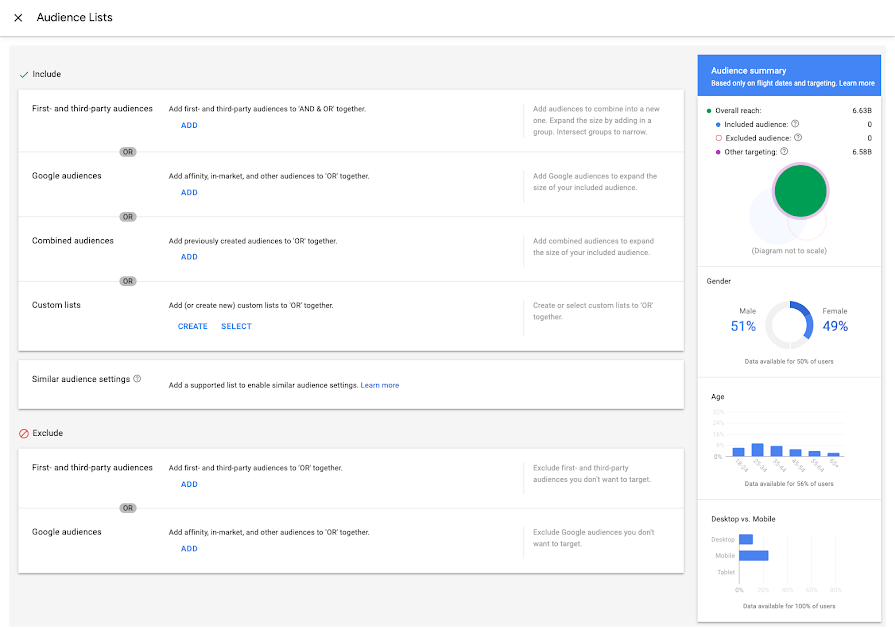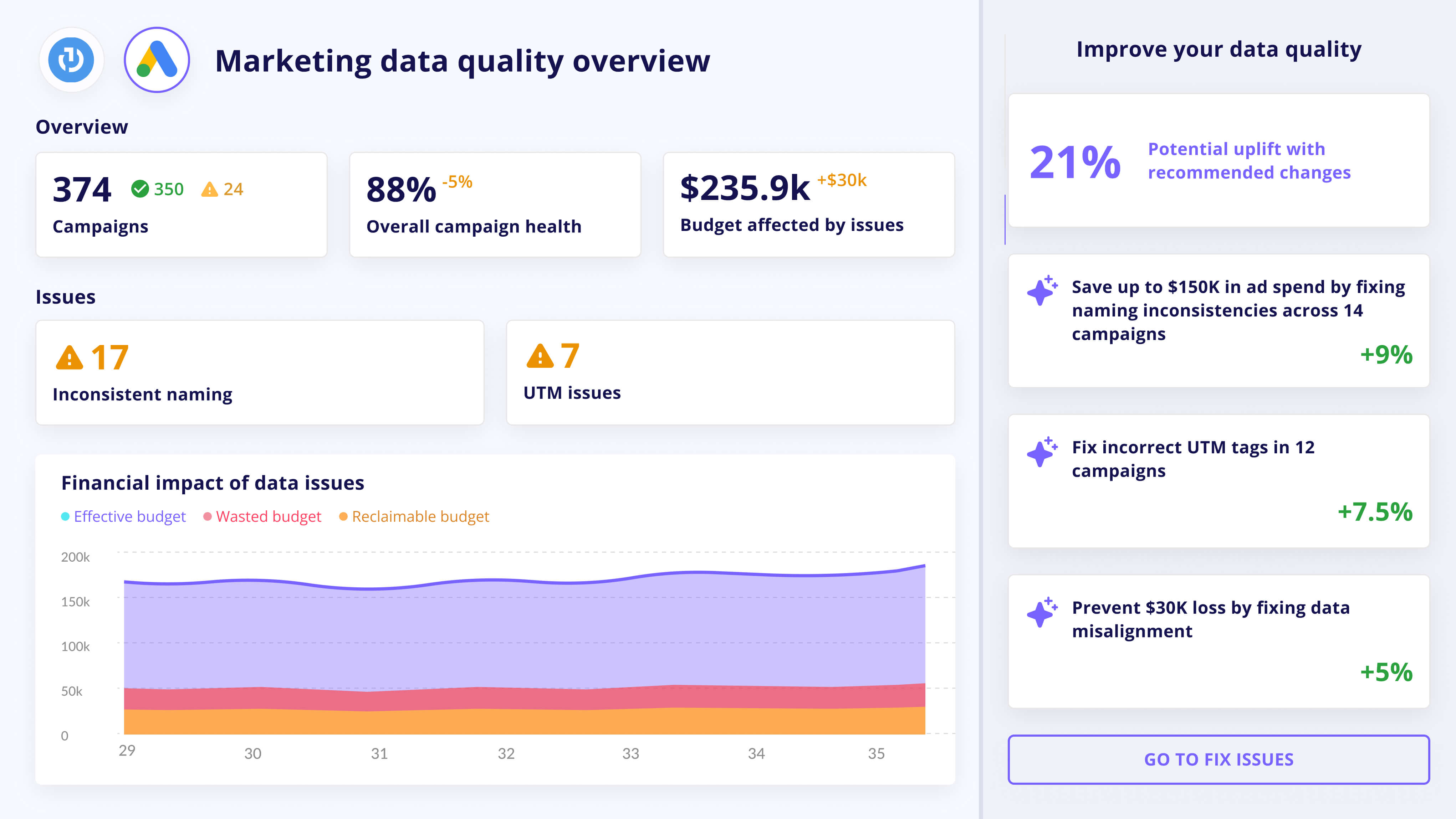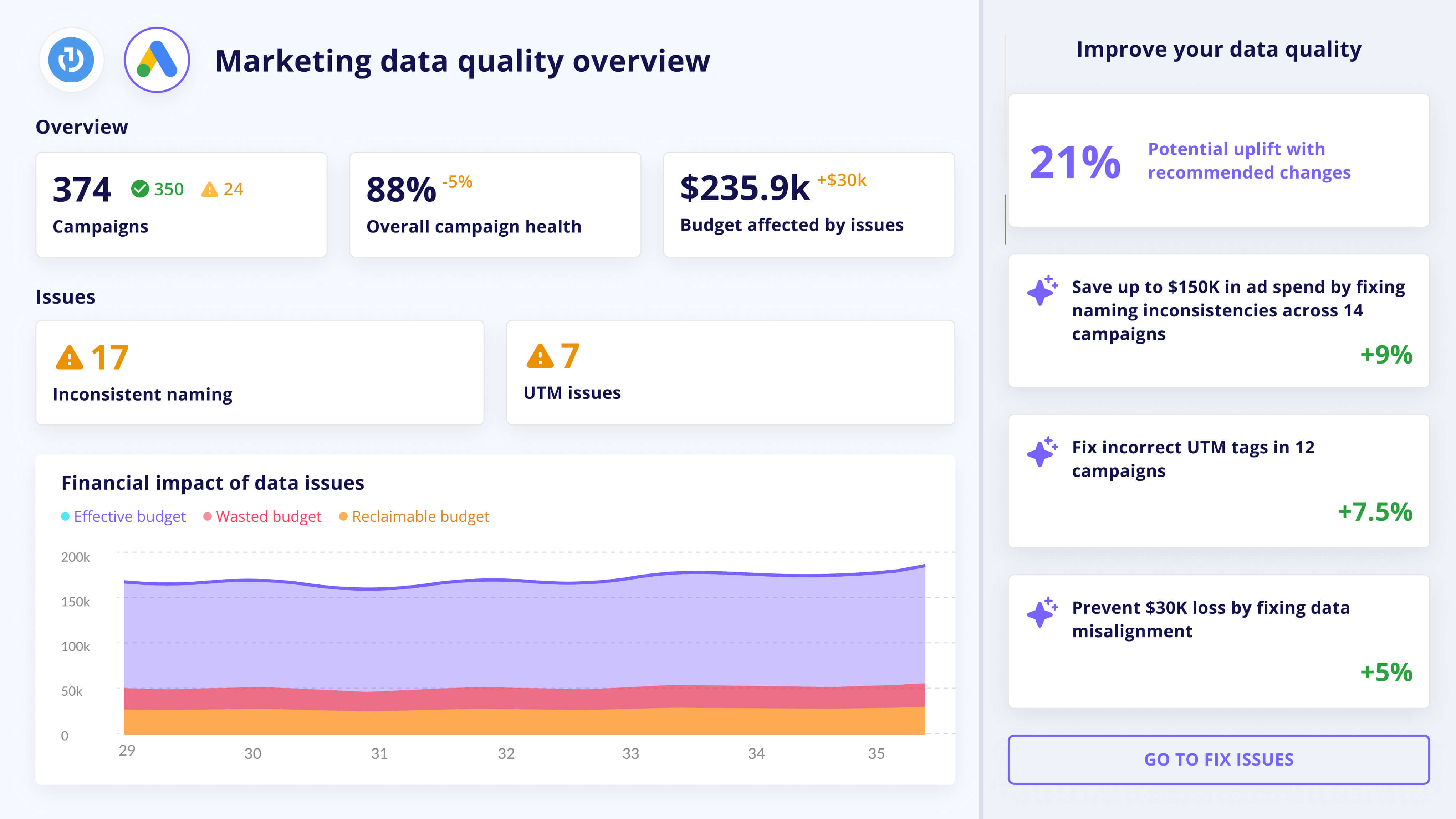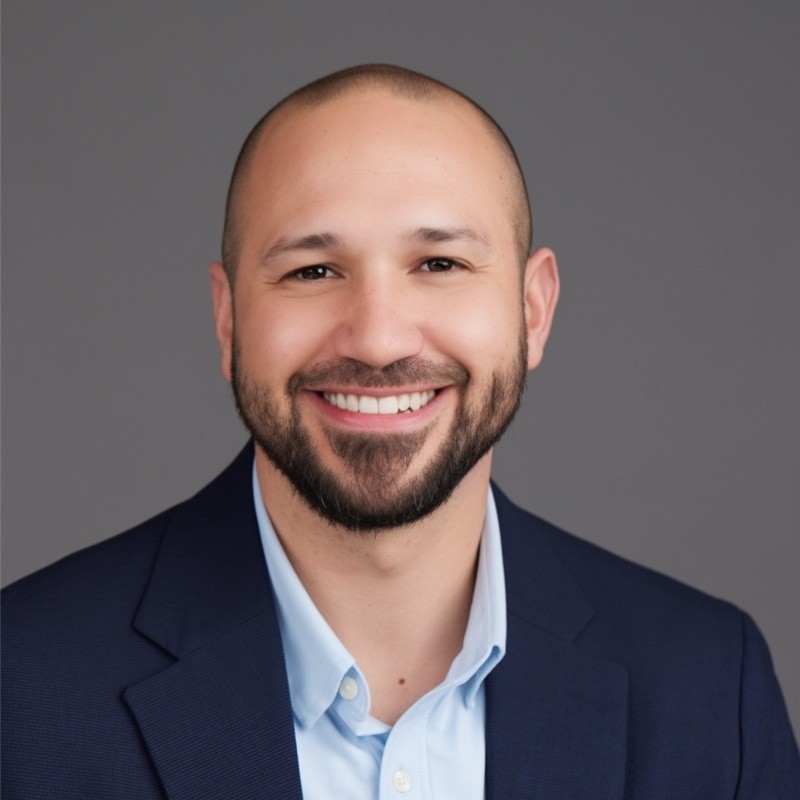Programmatic advertising is witnessing an impressive growth rate in recent times with global ad spending approaching 557.56 billion U.S. dollars.
If you're looking to invest in programmatic advertising or optimize your efforts, the first thing on your mind would be to determine the best platform to partner with.
This guide explores 12 of the best programmatic advertising platforms that can help your business achieve marketing success in 2024 and beyond. We'll compare platforms based on several criteria, including pricing, ad inventory quality, audience targeting, and anti-fraud/safety measures.
Top Programmatic Platforms by Category

Programmatic advertising relies on four categories of platforms to function: Demand-Side Platforms (DSPs), Supply-Side Platforms (SSPs), Ad Exchanges, and Data Management Platforms (DMPs).
Advertisers make use of DSPs to bid for digital ad space, while publishers make use of SSPs for selling their ad spaces.
An ad exchange serves as a marketplace for connecting advertisers and publishers through their respective platforms. A DMP collects all kinds of data related to an advertiser's ideal customer.
Now, let’s explore some of the best programmatic ad platforms in each category.
1. Demand-Side Platforms (DSPs)
A demand-side platform (DSP) allows advertisers to bid for ad impressions on publisher websites. It also enables advertisers to filter their target audience based on specific criteria like location, age, past online behavior, gender, and more.
Here are some of the most popular programmatic DSPs:
| Feature | Adobe Advertising Cloud | MediaMath | AdRoll | DV360 | StackAdapt | Amazon DSP |
|---|---|---|---|---|---|---|
| Best for | Enterprise cross-channel campaigns | Advanced programmatic teams | SMBs and ecommerce brands | Large-scale advertisers in Google ecosystem | Full-funnel, multi-channel marketers | Retail and performance-driven brands |
| Strengths | Deep Adobe integration, TV + digital buying | Custom bidding, strong data capabilities | Retargeting, Shopify/DTC integrations | YouTube, cross-channel, Google stack | Contextual AI, native, CTV, DOOH | Amazon shopper data, retail attribution |
| Limitations | High complexity, Adobe lock-in | Steep learning curve, shrinking footprint | Limited scale and targeting | Steep learning curve, Google ecosystem lock-in | No access to walled gardens (YouTube/Amazon) | High budget threshold, closed ecosystem |
| Inventory access | Display, video, search, TV (linear & CTV) | Open web, mobile, video, CTV | Web, mobile, display, social retargeting | Display, YouTube, CTV, audio, mobile | Native, display, video, CTV, DOOH, email | Amazon sites, Fire TV, Twitch, open web |
| Pricing model | License + % of media spend | % of media spend | Monthly fee + media spend | % of media spend | CPM-based, no minimum for self-serve | CPM-based, minimum spend for managed |
Adobe Advertising Cloud DSP
Adobe Advertising Cloud DSP prides itself as “the only omnichannel programmatic DSP that supports connected TV, video, display, native, audio, and search campaigns.”
Mentioned as a leader in the Gartner Magic Quadrant for Ad Tech, Adobe provides features that help advertisers launch, manage, and optimize campaigns. This includes inventory management, personalized marketing, search management, and more.
- Pricing: Custom. Pricing depends on different factors like company size, requirements, and the number of tools purchased
- Supported Ad Inventory: Display, video, audio, mobile apps, Digital out of Home (DOOH), TV, native, and social
- Audience Targeting: Audience segment, device type, location, browser, and more
- Anti-fraud/Safety Measures: Offers page screening for detecting faulty inventory and pre-bid filtering for detecting fraud, suboptimal viewability, and brand violation.
MediaMath
Launched in 2007, MediaMath is one of the best programmatic advertising platforms (DSPs) in the industry. Today, it partners with over 3,500 advertisers to help them run omnichannel campaigns across mobile, display, OTT, native, video, audio, and more.
Its SOURCE ecosystem is designed to help advertisers achieve better supply-path optimization and algorithm decision. MediaMath is also recognized as a leader in the Gartner Magic Quadrant for Ad Tech.
- Price: Custom
- Supported Ad Inventory: Connected TV, display, mobile, video, audio, native, and DOOH
- Audience Targeting: Audience segment, contextual, first-party data, site list, location, daypart, technology, video, and audio.
- Anti-fraud/Safety Measures: Uses its SOURCE ecosystem to ensure supply-chain trust through pre-bid IVT protection and onboarding tools.
AdRoll
AdRoll is known for its simplicity and the quality of its ad templates. The platform focuses on helping brands expand their reach through video, social ads, display, native, email, and more.
Recognized as a leader in the Gartner Magic Quadrant for Ad Tech, AdRoll uses a broad spectrum of data to determine where and when to deliver ads to prospects.
- Price: Offers a free package for starters as well as a custom pricing package for enterprises
- Supported Ad Inventory: Video, social ads, display, native, and email
- Audience Targeting: Contextual, lookalike, demographic, interest, lookalike, and CRM targeting
- Anti-fraud/Safety Measures: Has a Trust and Safety Team for automatically and manually filtering invalid traffic
Google Display & Video 360 (DV360)

Google Display & Video 360 (DV360) is an enterprise-grade demand-side platform that allows marketers to plan, buy, and optimize media across display, video, YouTube, native, audio, and connected TV.
What sets DV360 apart is its deep integration with the broader Google Marketing Platform, including GA4, Campaign Manager 360, and Search Ads 360. This enables unified audience targeting, cross-channel frequency management, and more accurate attribution.
DV360 offers access to premium inventory through both open exchanges and programmatic guaranteed deals. Its advanced tools allow for precise audience segmentation using first-party data, Google audiences, or custom intent signals, making it suitable for both brand and performance goals.
For organizations managing multi-channel media at scale, DV360 provides strong governance, collaborative workflows, and granular control over campaign performance.
- Pricing: Percentage of media spend (typically 7–15%), plus potential data and tech fees
- Supported Ad Inventory: Broad access to open exchanges, private marketplaces, YouTube, CTV, audio, native, display, mobile
- Audience Targeting: 1st-party, 3rd-party, Google audiences, custom affinity, in-market, lookalike, and intent-based; supports GA4 and CDP integrations.
- Anti-fraud/Safety Measures: Built-in protections via Google’s proprietary systems; integrates with third-party tools (e.g., IAS, DV, MOAT); supports brand safety, viewability, and fraud prevention standards
Simpli.fi
Simpli.fi is another popular programmatic ad platform. It’s designed to deliver localized, data-driven advertising across channels like CTV, display, mobile, video, native, and audio.
It stands out for its ability to ingest and act on unstructured, real-time data such as GPS signals, browsing behavior, and keyword-level intent, enabling highly granular audience targeting.
Unlike traditional DSPs that rely on pre-packaged audience segments, Simpli.fi allows advertisers to build custom audiences using individual data elements. This approach enhances precision and reduces overlap, making it particularly effective for location-based campaigns, addressable targeting, and performance-driven initiatives.
Simpli.fi is most suited for organizations seeking to execute hyper-targeted, omnichannel campaigns.
- Pricing: Transparent CPM-based pricing; no minimum spend; flexible self-serve or managed service options
- Supported Ad Inventory: Display, mobile, video, native, audio, CTV, addressable geofencing, and DOOH
- Audience Targeting: Granular targeting using unstructured data (e.g., location, search keywords, CRM lists); strong local and address-level precision
- Anti-fraud/Safety Measures: Uses pre-bid fraud filters and third-party verification
StackAdapt
StackAdapt is a self-serve, AI-powered DSP.
A key differentiator of StackAdapt is its integration of advertising technology (adtech) and martech functionalities. The platform's Data Hub enables seamless activation of first-party data, facilitating personalized and privacy-compliant campaigns. Additionally, the inclusion of native email marketing tools allows for coordinated messaging strategies within a single platform.
StackAdapt offers advanced targeting options, such as contextual targeting powered by proprietary AI, account-based marketing (ABM), and precise geolocation targeting.
- Pricing: CPM-based; no minimum spend for self-serve; managed service available with variable thresholds
- Supported Ad Inventory: Native, display, video, audio, CTV, in-game, DOOH, and email
- Audience Targeting: 1st-party data, contextual AI, lookalike, ABM, geolocation, keyword, site lists, and retargeting
- Anti-fraud/Safety Measures: Integrates with third-party verification (IAS, HUMAN, etc.); pre-bid filters, domain blocklists
Amazon DSP
Amazon DSP is a demand-side platform that enables advertisers to programmatically buy display, video, and audio ads both on and off Amazon’s owned properties. It offers access to Amazon’s unique, high-intent audience segments derived from real-time shopping and browsing behavior.
Advertisers can target audiences based on purchase history, product views, or shopping patterns. With built-in measurement tools, advertisers can track conversions, brand lift, and retail outcomes like sales and detail page views.
Amazon DSP is especially valuable for brands selling on Amazon, but it also serves non-endemic advertisers seeking access to high-quality inventory, advanced targeting, and retail-linked attribution.
- Pricing: CPM-based; typically requires a $35K–50K/month minimum for managed service
- Supported Ad Inventory: Display, video (including Fire TV, Twitch, IMDb), audio, mobile, and third-party web/app inventory
- Audience Targeting: Amazon 1st-party behavioral, in-market, lifestyle, purchase data; CRM/retargeting; lookalike modeling
- Anti-fraud/Safety Measures: Proprietary fraud detection backed by Amazon data; verified inventory; integrates with third-party tools
2. Supply Side Platform (SSP)
A supply-side platform (SSP) focuses on helping publishers (website owners) sell ad space on their apps, websites, and other digital properties.
These platforms use automation to determine the optimal price for each ad space and sell to the best bidder. SSPs work with ad networks to connect publishers to a broader pool of advertisers.
Let’s take a look at a few of the leading SSPs in the industry.
| Feature | PubMatic | Google Ad Manager (GAM) | Criteo | Magnite (ex Rubicon Project) |
|---|---|---|---|---|
| Best for | Publishers seeking transparency and multi-channel monetization | Publishers integrated into the Google ecosystem | Retailers and commerce-focused publishers | CTV and premium video publishers at scale |
| Strengths | Strong reporting, transparency, and omnichannel support | Seamless AdX integration, advanced yield tools | Access to Criteo’s commerce media demand and retargeting engine | CTV-first architecture, premium inventory access, auction tools |
| Limitations | Less dominant in CTV compared to Magnite | Limited transparency into Google’s auction dynamics | Closed ecosystem with limited external demand access | Less support for small/mid-sized publishers |
| Supported inventory | Display, video, mobile, CTV, native | Display, video, mobile, AMP, native | Display, native, video, mobile (commerce-focused) | CTV, video, mobile, display, OTT |
| Monetization controls | Advanced floor pricing, PMP tools, auction package creation | Dynamic allocation, AdX rules, unified pricing | Retail media tools, product-level yield optimization | Advanced podding, programmatic guaranteed, auction mechanics |
| Anti-fraud | TAG certified, pre-bid fraud filters, ads.txt/sellers.json support | Google’s proprietary filters, ads.txt enforcement, third-party verification | Closed network, curated publishers, real-time monitoring | Third-party integrations (IAS, HUMAN), IAB standards, pre-bid filters |
PubMatic
PubMatic offers services for both media buyers and publishers. As an SSP, it provides an impressive collection of tools to help publishers optimize the monetization potential of all their digital assets.
This includes tools for header bidding, RTB advertising, Private Marketplaces (PMP), and ad quality.
- Supported Ad Inventory: CTV, OTT, display, video, addressable, mobile, native, and more
- Anti-fraud/Safety Measures for Publishers: Uses real-time scanning and strategic partnerships to safeguard publisher’s audiences across ad formats, channels, and screens
Google Ad Manager
Programmatic publishers utilize an average of 6 SSPs to sell ad space to advertisers. Despite this, Google remains the most popular SSP among publishers, claiming 51% of the industry’s market share.
In fact, 75% of ad impressions in the US come from Google Ad Manager. More insights in the Twitter thread below.
wow, we finally have a number. 75% of the ad impressions in the United States are served by Google Ad Manager according to Google's internal docs. I'm sure the fact they also own the dominant browser, search engine, buying platforms is irrelevant. /25 pic.twitter.com/NhwraB1czN
— Jason Kint (@jason_kint) October 22, 2021
Google Ad Manager exists for large publishers with significant direct sales. Some of the tools it offers include server-side header bidding, managed PMPs, advanced dashboard and reporting system, and more.
- Supported Ad Inventory: Video, mobile, display, and native.
- Anti-fraud/Safety Measures for Publishers: Google supports popular safety standards, initiatives, and protocols such as the IAB ads.txt standard, SafeFrame, and HTTPS to protect against unsuitable ads and invalid activity
Criteo
Criteo is a programmatic advertising solution with a commerce-first approach—tailored more for retail, ecommerce, and performance marketing than broad awareness campaigns.
It uses its proprietary commerce media network to deliver personalized ads based on real-time shopper behavior across thousands of publishers and retailers.
Unlike traditional DSPs that rely heavily on third-party data and open exchange inventory, Criteo leverages its direct integrations with retailers and first-party commerce data. This gives advertisers access to high-intent audiences and product-level targeting that aligns with shopping behavior, not just general demographics.
Criteo’s closed-loop measurement allows marketers to track the full path to purchase, connecting ad exposure to actual sales outcomes. This makes it especially valuable for brands focused on lower-funnel performance and measurable ROI.
Read the thread for more details on how Criteo monitors users and matches data on user behaviors.
This is how Criteo monitors people, from looking at stuff across myriads of websites+apps to purchasing stuff in stores.
— Wolfie Christl (@WolfieChristl) August 31, 2020
Matching data on behaviors is based on hashed device IDs, email addresses and other identifiers.
Everyone is assigned a 'Criteo ID'.https://t.co/okamK0cRsH pic.twitter.com/bmRuUq8fZj
- Supported Ad Inventory: Display, native, video (desktop and mobile), and in-app; primarily focused on commerce media inventory across Criteo’s network of retailers and publishers
- Anti-fraud/Safety Measures for Publishers: Proprietary fraud prevention system focused on commerce intent signals; strict supply-side controls via its closed network; brand safety enforced through curated publisher partnerships and internal review processes
Magnite (ex Rubicon Project)
Magnite, formerly known as Rubicon Project, is one of the leading SSP for inventory monetization across CTV, video, display, and mobile environments. It connects premium media owners with top-tier demand sources through real-time auctions and programmatic deals.
Magnite is strongly focused on connected TV and video monetization. The platform is purpose-built to handle the complex needs of CTV publishers, offering advanced tools for ad podding, ad frequency capping, and audience segmentation.
For advertisers looking to scale high-quality video and CTV campaigns while maintaining control and transparency, Magnite serves as a critical part of the programmatic supply chain.
- Supported Ad Inventory: CTV, OTT, desktop and mobile display, mobile in-app, video, native; strong in premium video and publisher-direct inventory
- Anti-fraud/Safety Measures for Publishers: Offers pre-bid and post-bid protections, ads.txt and sellers.json compliance, integration with third-party verification; also supports traffic filtering and auction-level transparency
3. Ad Exchanges
Ad Exchanges position themselves as the intermediary between advertisers and publishers.
Publishers come to ad exchanges to submit ad impressions which are then presented to advertisers for bidding in real-time.
Here are some of the best ad exchanges in the industry.
| Feature/Aspect | Xandr | SmartyAds | PubMatic |
|---|---|---|---|
| User Interface | Comprehensive, data-driven UI | Intuitive, user-centric design | Modern, user-friendly UI |
| Data Integration | Rich partner ecosystem, with AT&T data | Extensive third-party integrations | Wide range of data partners |
| Audience Targeting | Advanced, with AT&T data integration | Diverse targeting options | Advanced targeting capabilities |
| AI & Machine Learning | Advanced optimization & prediction | Smart optimization & bidding | Real-time optimization algorithms |
| Ad Formats Supported | Display, video, mobile, native, CTV | Display, video, mobile, native, audio, CTV | Display, video, mobile, native, CTV |
| Pricing Model | Custom, based on features & volume | Custom, varies with services & features | Custom, often based on ad spend and features |
| Customer Support | Dedicated account support & resources | 24/7 support, personalized assistance | 24/7 support & dedicated account managers |
| Analytics & Reporting | Detailed insights & analytics dashboard | Comprehensive performance reports | In-depth reporting & real-time analytics |
Xandr
Originally called AppNexus, Xandr is a leading programmatic advertising company offering a full stack of programmatic advertising services. This means it provides services, such as a DSP, SSP, and an Ad Exchange.
As an Ad Exchange, Xandr serves over 11.4 billion ad impressions daily.
One of its most notable features is its header bidding wrapper, which makes header bidding more convenient and efficient for publishers. The platform supports different ad inventory, including video, banner, audio, native, and more.
Xander partners with White Ops, an MRC-accredited company, for ensuring brand safety across its marketplace.
SmartyAds
SmartyAds provides a white-label ad exchange platform, Smart Hub, which has recorded over 25,000 publishers and 2 billion impressions daily.
It also serves as a full-stack programmatic ad tech platform, offering services as a DSP and SSP to both advertisers and publishers. The platform is compatible with a wide range of traffic types and ad formats, including video, banner, audio, native, push, pop, and more.
Compared to Xandr, SmartyAds offers a more comprehensive collection of security and anti-fraud features and partnerships to make the marketplace safer for publishers and advertisers.
PubMatic
PubMatic makes a second appearance in this guide, thanks to its incredible capabilities as a full-stack ad tech platform.
As an ad exchange, PubMatic has established itself as an industry leader with over 171 billion ad impressions per day. Publishers benefit from its ease-of-use, DMP integrations, and open-source header bidding.
On the advertisers' side, PubMatic offers integration with various security tools to prevent fraudulent practices and ensure brand safety.
4. Data Management Platforms (DMPs)
DMPs are less talked about in programmatic advertising platforms realm. But they're equally as important. Advertisers use all kinds of data when developing a campaign strategy to ensure their ads are relevant to their prospects.
DSPs automatically place bids for ad spaces in the marketplace, but to ensure that the purchased ads are aimed at the right demographic, these platforms take advantage of data supplied by DMPs. Publishers, on the other hand, use DMPs to store and analyze user data to get a better understanding of their website visitors.
Here are some of the most popular DMPs in the industry.
| Feature/Aspect | Audience Studio | Lotame | The Trade Desk |
|---|---|---|---|
| User Interface | Intuitive, tailored for Salesforce users | User-friendly with modern design | Sleek, efficient design |
| Data Integration | Deep Salesforce integration, third-party data sources | Extensive data partner integrations | Multiple data partners & exchanges |
| Audience Segmentation | Advanced, with real-time data activation | Flexible audience creation & segmentation | Granular, audience-focused targeting |
| AI & Machine Learning | Predictive intelligence & data modeling | AI-driven insights & audience modeling | AI-powered bidding & optimization |
| Ad Formats Supported | Supports diverse customer data profiles | Cross-device, multiple digital touchpoints | Display, video, audio, mobile, native, CTV |
| Data Collection | Real-time data collection & activation | Real-time data gathering & activation | Real-time bidding & data processing |
| Pricing Model | Custom, based on features & volume | Customized pricing based on data needs | Custom, based on ad spend and features |
| Customer Support | Comprehensive Salesforce support & training | Dedicated account management & support | 24/7 support & dedicated resources |
| Analytics & Reporting | Real-time data insights & Salesforce reports | In-depth audience analytics & reporting | Detailed campaign performance & analytics |
The Trade Desk
Alongside a DSP, The Trade Desk offers a DMP to help advertisers and publishers collect, manage, and activate their data in one place.
One of its most popular features is its lookalike modeling which allows you to discover new audiences based on insights from your existing audiences. It also offers a data marketplace where users can access high-quality audiences from data providers.
TheTradeDesk is actively expanding in the DMP sector. For example, TikTok and theTradeDesk launched a partnership not long ago. This collaboration will drive more brands to the platform and stimulate the growth of advertising on TikTok.

Audience Studio by Salesforce
Salesforce is widely known for its CRM system. However, the company also offers a Data Management Platform for advertisers.
Formerly known as Salesforce DMP, Audience Studio allows advertisers to capture data from any source and segment this data using machine learning algorithms. It also offers a native consent management framework to help advertisers maintain transparency and trust with their customers.
Lotame
Lotame is an industry-leading DMP that offers a wide range of services, including audience management, data marketplace, and identity resolution.
It allows its users to access first-party data from sources like emails, CRMs, social media, apps, and more. It also provides the opportunity to expand on available data through its data marketplace.
Lotame’s DMP, however, lacks live reporting features and loads relatively slowly.
Protect Ad Revenue with Smarter Marketing Data Governance
Programmatic advertising involves managing countless moving parts—targeting parameters, budget allocations, creative variations, and platform-specific nuances.
Even small inconsistencies can lead to wasted spend or missed opportunities.

Improvado’s Marketing Data Governance tackles these challenges by automating the monitoring and validation of campaign guidelines in real time. It identifies and flags misaligned targeting, incorrect budget allocations, and underperforming segments before they escalate into bigger problems.
By ensuring campaigns stay aligned with goals and benchmarks throughout their lifecycle, it empowers advertisers to adjust and optimize campaigns on the go, not after execution. This proactive approach reduces inefficiencies and maximizes both ROAS and ad spend efficiency.
Here’s an example of DV360 parameters Marketing Data Governance monitors:
- Keywords added for the insertion order,
- Geographical targets set for the insertion order,
- Keyword exclusions are used (Display & Video),
- Third-party brand safety partner solution is integrated,
- Sensitive content placements were removed,
- Advertiser Account is at or less $X Avg. CPC,
- Advertiser Account is at or above X% Clicks,
- Insertion Order is at or above X% Interaction Rate,
- Line Item is at or less $X CPM,
- Line Item Target CPA is at or below $X.
.png)





.png)
